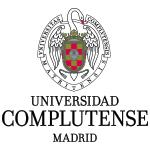Cetacean Neurobrucellosis: Pathological and Immunological Comparative Aspects with Humans and Animal Models
Conference in Joint congress of Veterinary Pathology and Veterinary Clinical Pathology
August 31st, 2023
Rebollada A., Giorda F., Pumarola M., Martino L., Gómez-Buendía A., Romani-Cremaschi U., Casalone C., Mattioda V., Di Nocera F., Lucifora G., Petrella A., Dominguez L., Domingo M., Grattarola C. and Rodriguez-Bertos A.
Brucellosis (Brucella spp.) is a zoonosis that causes multisystemic disease in humans. Brucella infection of the central nervous system (CNS), or neurobrucellosis, occurs in up to 25% of human patients. Brucella ceti causes brucellosis in mysticete and odontocete cetaceans worldwide. Interestingly, CNS involvement by B. ceti has been reported in particular in the striped dolphin (Stenella coeruleoalba). Thus, neurobrucellosis appears to be a condition shared by cetaceans and humans. However, the common aspects of the immune response in neurobrucellosis in both species, and animal models of brucellosis have not been studied. Twenty-one cases of neurobrucellosis (Brucella ceti) in striped dolphins diagnosed over a ten-year period (2012-2022) at two diagnostic laboratories were retrospectively evaluated. Brucella infection was confirmed by bacterial culture and PCR. For each case, histological lesions were assessed evaluating 19 parameters. In addition, the immunohistochemical expression of Brucella antigen, and of a selection of inflammatory cell markers (Iba-1, CD3, CD20) and cytokine markers (TNF-α, IFN-γ, IL-1β, IL-2, IL-6) were investigated. Inflammation of the leptomeninges, ependyma and/or choroid plexus is lymphohistiocytic, containing
macrophages/microglia (Iba-1+), T cells and B cells in equal proportion. Increased expression of TNF- α, IFN-γ and IL-2 indicates a proinflammatory response that stimulate macrophages and T cells. Cetacean and human neurobrucellosis are pathologically and immunologically similar. Disease surveillance in cetaceans is valuable for diagnosing threats to several endangered species but can also be exploited to expand the knowledge of the immunology of infectious diseases, particularly brucellosis, under a One Health approach
 | Servicio de Patología y Veterinaria Forense (SAP). Centro de Vigilancia Sanitaria Veterinaria (VISAVET). Universidad Complutense (UCM). |
 | Departamento de Medicina y Cirugía Animal. Facultad de Veterinaria. Universidad Complutense (UCM). |
 | WOAH Collaborating Centre for the Health of Marine Mammals. Istituto Zooprofilattico Sperimentale del Piemonte, Liguria e Valle d`Aosta (IZSPLV). |
| Departamento de Medicina y Cirurgia Animal. Departamento de Sanidad y de Anatomía Animal. Facultad de Veterinaria. Universitat Autònoma de Barcelona (UAB). | |
 | Departamento de Sanidad Animal. Facultad de Veterinaria. Universidad Complutense (UCM). |
| Servicios Veterinarios. Mundomar. | |
 | Departamento de Toxicología y Farmacología. Facultad de Veterinaria. Universidad Complutense (UCM). |
| Istituto Zooprofilattico Sperimentale de Mezzogiorno (IZSM). | |
| Istituto Zooprofilattico Sperimentale della Puglia e della Basilicata. | |
| Centre de Recerca en Sanitat Animal (CReSA). Universitat Autònoma de Barcelona (UAB). Instituto de Investigación y Tecnología Agroalimentarias (IRTA). Generalitat de Catalunya. | |
Link to Joint congress of Veterinary Pathology and Veterinary Clinical Pathology

